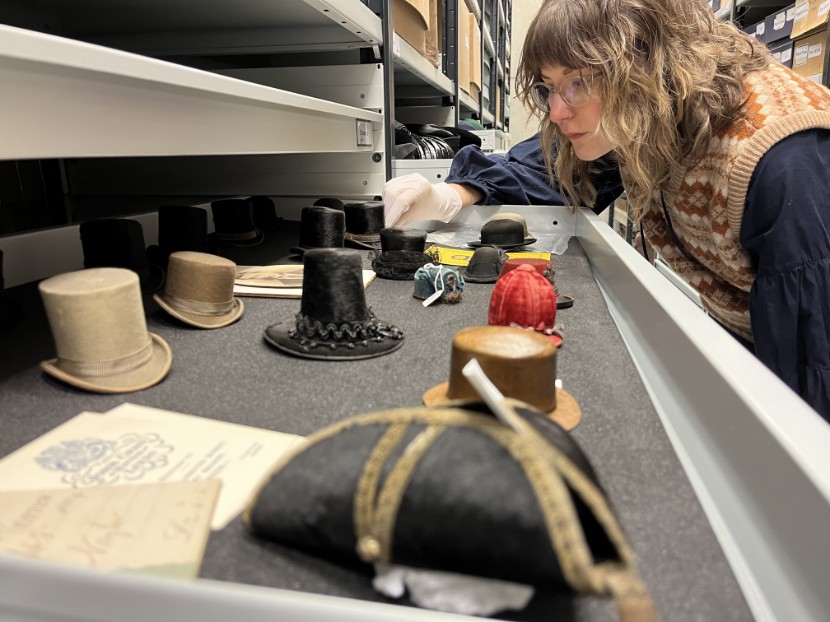
18 Mar 2024
Hats small folks as museum starts historic head count
A marvellous collection of vintage miniature millinery is among the historic headgear being documented by museum experts and volunteers in Leeds.
The remarkable range of tiny replica hats, some of which fit in the palm of a hand, were made by Leeds hatter John Craig in the early 1900s and is being carefully conserved as part of a project at the Leeds Discovery Centre.
Originally crafted to show to clients and demonstrate both the maker’s skill and the impressive range of products they could create, the mini hats include models made for both men and women, such as top hats, riding hats, gold trimmed bicorne, and tricorne hats and feather trimmed hats.
The centre currently has an estimated 200 objects made by John Craig, who established his business in the popular shopping district of Park Row, Leeds in the late 19th century.
The shop remained there until 1936 before moving to Wellington Street, where it traded until around 1947.
A leaflet from 1927 said John Craig "commenced his business with the ambition of supplying good hats, and as the variety of shapes increased specialising in selecting for his customers the hats of most suitable shape giving especial care to the comfort of the wearer."
Natalie Raw, Leeds Museums and Galleries curator of costume, has been working with a group of student volunteers from The University of York to document the extent of the John Craig collection and other objects stored at the Leeds Discovery Centre.
She said: “The quite remarkable variety of shapes, sizes and colours of hats in our collection shows the many different ways they have been worn over the decades, including practically as a status symbol, and sometimes as a flamboyant fashion statement.
“These wonderful miniature hats in particular demonstrate the skill and artistry possessed by one traditional Leeds hatmaker and the pride he clearly took in his work. It’s fascinating to think of each of them carefully and meticulously made in the workshop and then proudly shown to potential customers.
“We’re fortunate to have such an extensive collection to go through and it’s been so rewarding to find out more about the history behind these beautiful, stylish creations.”
Other remarkable examples of hats from the Leeds collection include a Tudor hat, which was found buried in mud in London and elaborate hats made from feathers of birds including peacocks.
In the 1500s the centre for the making of up-market accessories, including hats, was Milan, so merchants from the Italian city who sold such trimmings were known as Milliners. By Victorian times the word milliner had become only associated with hat design and making.
Leeds itself had a fiercely competitive hat trade, with records and advertising showing a number of emporia also established in Briggate and Boar Lane.
Councillor Jonathan Pryor, Leeds City Council’s deputy leader and executive member for economy, culture and education, said: “Fashion and textiles have been a key part of the Leeds story for generations, and played a pivotal role in establishing the city we know today.
“Having such a fantastic and unique collection which reflects that story so well is an incredible asset for Leeds and something which will ensure our city’s heritage is preserved for future generations.”
Leeds Discovery Centre is open to the public, and tours must be booked in advance.
To find out more about times and how to book, please visit: Leeds Discovery Centre - Leeds Museums & Galleries
ENDS
For media enquiries contact:
Leeds City Council Communications team
communicationsteam@leeds.gov.uk